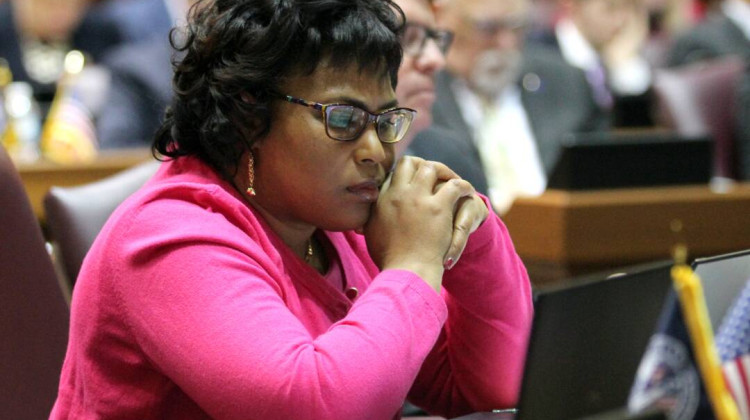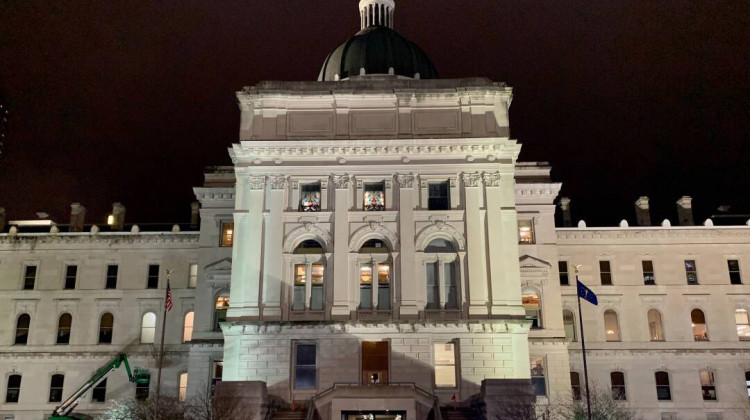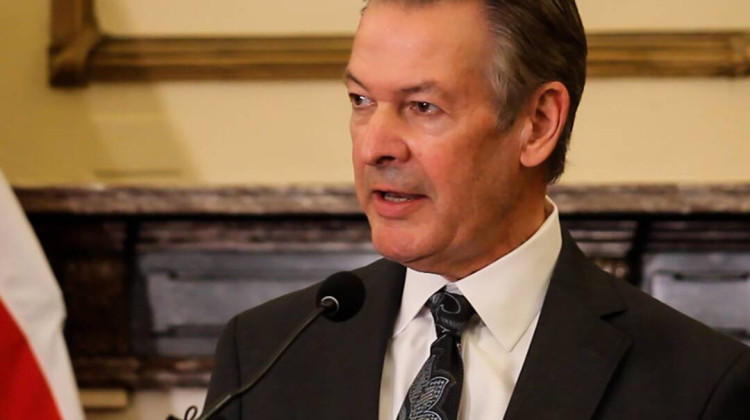
In Indiana, there are currently several Amtrak passenger rail lines that run throughout the state. However, these services are limited for cities such as Indianapolis and Lafayette – and there are no options for Fort Wayne.
FILE PHOTO: Annie Ropeik/IPB NewsIn Indiana, there are currently several Amtrak passenger rail lines that run throughout the state. However, these services are limited for cities such as Indianapolis and Lafayette – and there are no options for Fort Wayne.
Tod Bassler is the president of Indiana Passenger Rail Alliance.
He said the South Shore Line is one of the few commuter lines that sets a good example for the state’s passenger rail system.
“So we have the last remaining interurban [train line] in the Midwest, between South Bend and Chicago: the South Shore Line,” Bassler said. “It's being invested in thanks to many people, including the Indiana Department of Transportation.”
Steve Coxhead is an IRPA board member; he said Lake County, where the South Shore Line is located, would have “died on the vine” if it weren’t for the establishment of public transportation.
He emphasized IRPA does not advocate to get rid of roadways, rather, it attempts to advocate for passenger rail as an alternative.
“When you expand a highway, the volume of traffic will expand rapidly to fill the capacity,” he said. “So what our organization advocates is not abandoning surface roads, but that there should be selected Rail Passenger corridors tying important parts of the state together so that there are options.”
Coxhead said it is virtually impossible to get to northwest Indiana from parts of southern Indiana without driving.
Kim Irwin is the executive director of Health By Design, a nonprofit organization that connects infrastructure and public health.
She said current spending for transportation in Indiana is heavily geared towards roadways.
“When we look at like the state department of transportation budget, an upwards of 96-97 percent of that total state budget, which is billions of dollars each year, is being directed into roadway construction, expansion, even and maintenance; whereas, we're investing less than 4 percent, even 3 percent of those total dollars on rail transit and bus and rail service trails, and walking and biking infrastructure,” Irwin said.
She adds that current spending is comfortably routed towards roadways and road infrastructure.
“At this point, we have decades of investment that easily flows to roadway travel,” Irwin said. “Decision making and kind of prioritization around other modes is often a much harder thing to come by and again, then results in less of that happening.”
Coxhead said rail systems need to harness federal funds.
“Inter-city rail needs to be primarily federal funded, like inter-city highway systems are because of the cost,” he said.
Coxhead said there is money available, but the state government does not make a great effort to request this money from infrastructure acts.
“As near as we can figure out, INDOT has not been active in aggressively pursuing federal funds for passenger rail, because the governor has basically indicated that their priorities are elsewhere,” he said.
READ MORE: Hoosier State Line completes last trip before ceasing operations
Join the conversation and sign up for the Indiana Two-Way. Text "Indiana" to 73224. Your comments and questions in response to our weekly text help us find the answers you need on statewide issues.
Bassler said these issues are political and depend heavily on the organization of state government.
“The INDOT staff, who are all very good people and some of which are very interested in rail, they basically take their marching orders from the commissioner, and the commissioner basically takes his marching orders from the governor,” he said.
In 2019, Indiana lawmakers removed funding for Amtrak’s Hoosier State Line for travel from Indianapolis to Chicago. That line stopped operations on June 30, 2019. The Cardinal Line from Indianapolis still runs to Chicago, but only on Tuesday, Thursday and Saturday.
Irwin explained Statehouse legislation also limits the implementation of passenger rail in Indianapolis and several central Indiana counties.
“It limited the ability to use those dollars that were raised through the transit referendum and the additional tax dollars generated through that process,” she said. “The legislation actually prohibits the use of those dollars for rail, at around the same time kind of the decision was made to prioritize Bus Rapid Transit as opposed to rail transit.”
She said having this in place further prevents passenger rail from being a priority in cities such as Indianapolis.
Rick Harnish is the executive director of High Speed Rail Alliance – a group based in Chicago that advocates for rail travel in different cities. His company, while based in Chicago, looks at Indianapolis as a major hub needed to connect the nation through high-speed rail.
“The state should be designing a new high-speed line linking Indianapolis to Chicago,” Harnish said. “Imagine how it would improve Indianapolis if you could get on a train every half hour. And be pretty assured of a seat because trains are so much more efficient. They have a lot more seats.”
Coxhead said the lack of passenger rail leads to negative impacts on people’s health and wellbeing.
“There's a lot of isolation,” he said. “There's a lot of delay; we can't get back time. And how much time is spent with people sitting in their cars in parking lots that are supposed to be, you know, ways of getting around?”
Advocates for these organizations continue to push for cooperation between local leaders, individuals and state legislators to further advocate for passenger rail.
This story came in response to a listener's question. If you have questions about transportation in Indiana, you can text us. Sign up for the Indiana Two-Way by texting "Indiana" to 73224.
Contact reporter Violet at vcomberwilen@wfyi.org or follow her on Twitter at @ComberWilen.
9(MDAyMzk1MzA4MDE2MjY3OTY1MjM5ZDJjYQ000))
 DONATE
DONATE








 Support WFYI. We can't do it without you.
Support WFYI. We can't do it without you.